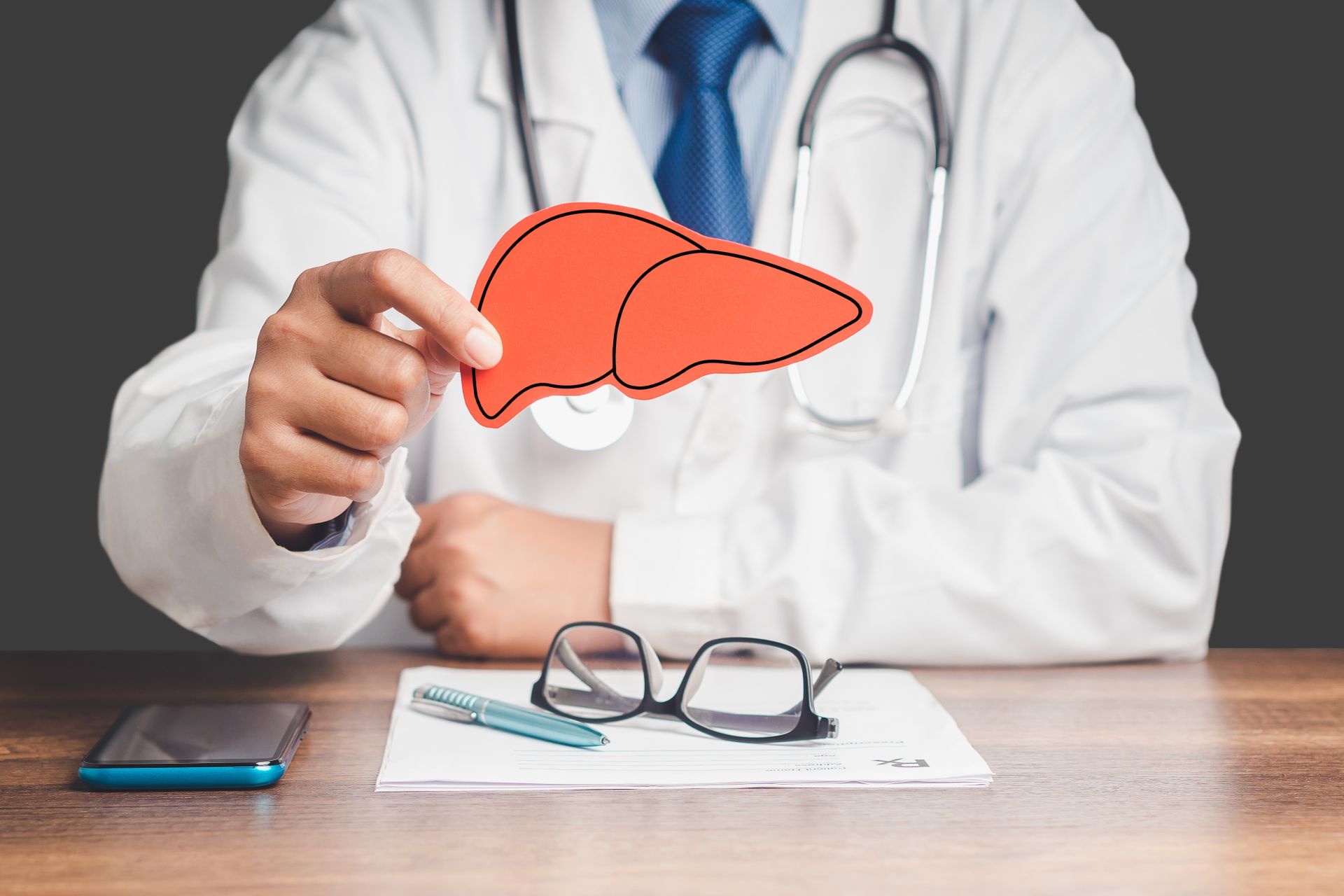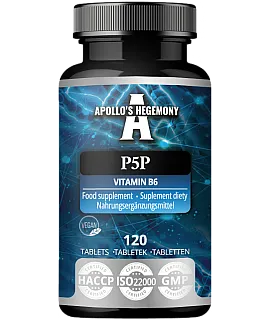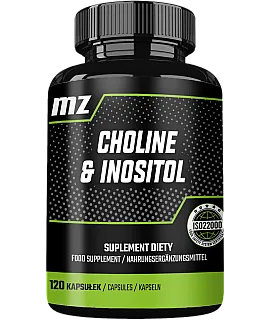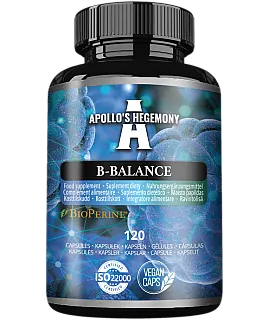Folic acid vs. homocysteine - what doses to use?

Folic acid is an important factor for efficient homocysteine metabolism. It ensures that homocysteine is continually restored to circulation and does not accumulate to toxic concentrations. However, there are more factors that affect the efficiency of folic acid. For this reason, homocysteine-lowering supplements also contain other ingredients than folic acid alone.
From this article, you'll learn how folic acid affects homocysteine, what dosages to use and what else to look out for when you want to lower it. Read to the end!
- How does folic acid lower homocysteine?
- Dosages of folic acid for lowering homocysteine levels
- Which form of folic acid to choose?
- MTHFR gene mutation vs. folic acid and homocysteine
- Dependence of folic acid on vitamin B12
- Summary
How does folic acid lower homocysteine?
There are several pathways of homocysteine metabolism, with the folic acid-dependent one being the most significant.
Folic acid metabolizes homocysteine through the remethylation pathway.
In the process of remethylation, homocysteine can be said to be recycled. With the recovery of the methyl group, it is converted to methionine and can continue its life cycle in the methionine cycle. In this methionine cycle, it is converted to S-adenosylmethionine (SAMe), this to S-adenosylhomocysteine (SAH) and again to homocysteine.
Homocysteine remethylation can occur with the involvement of two different enzymes:
- methionine synthase,
- betaine-homocysteine methyltransferase.
For the first, the donor of the methyl group is methylated folic acid (5-methyltetrahydrofolate, 5-MTHF), and this reaction is of most interest to us. The second enzyme creates an alternative pathway, independent of folic acid, in which the methyl groups are provided by trimethylglycine (TMG), also called betaine.
There is another alternative metabolic pathway called homocysteine transsulfuration, which is dependent on vitamin B6.
Are the other pathways of homocysteine metabolism insufficient, or is methylfolate lacking?
A direct consequence of impaired synthesis of this 5-MTHF, whether due to folic acid deficiency or a defect in the MTHFR gene, is reduced methionine synthesis. This leads to homocysteine destined for remethylation being diverted to the trans-sulfuration pathway. However, the latter pathway is unable to handle the extra homocysteine for two reasons:
- first, reduced methionine synthesis will lead to reduced intracellular SAMe concentrations;
- second, the absence of 5-MTHF will allow full GNMT activity, further reducing SAMe concentration and increasing homocysteine synthesis as a byproduct of glycine methylation.
Thus, the transsulfuration pathway becomes ineffective due to increased homocysteine load combined with SAMe concentrations too low to activate cystathionine synthesis (the initial transsulfuration reaction). As a result, homocysteine accumulates in the cell and is then excreted into the blood, causing hyperhomocysteinemia.
Dosages of folic acid for lowering homocysteine levels
The standard dose is 400 mcg per day, which is 200% of the recommended intake value for adults. In cases where homocysteine levels are really high or its lowering goes very resistant,doctors sometimes recommend much higher therapeutic doses of folic acid. Often this is 5 mg per day, which is 12.5x the standard dose, covering the daily requirement by 2500%.
Which form of folic acid to choose?
We often refer to vitamin B9 as folic acid, but in fact the role of this vitamin is performed by several substances collectively called folates. There are 3 forms of vitamin B9 in dietary supplements:
- pteroylmonoglutamic acid;
- L-methylfolate calcium;
- 5-methyltetrahydrofolate glucosamine salt.
The first form is ordinary, synthetic folic acid. The next two are already active, methylated folate. In principle, the choice of the active form is more versatile and simply better.

What is the advantage of methylated folate over regular folic acid?
Folic acid cannot be used immediately. Once it enters our system, it must first undergo processes that will activate it. Ultimately, it must be converted to the 5-MTHF form, or active methylfolate.
By choosing form 2 or 3 from the previously cited list, we get methylfolate practically ready for action. Why is this important? Because by using the ready-made form right away, we avoid a situation in which some intrinsic limitations could inhibit the effectiveness of the folic acid methylation process.
MTHFR gene mutation vs. folic acid and homocysteine
In the case of vitamin B9, the risk of internal limitations and bottlenecks is quite high. The problem is the very high prevalence of mutations in the MTHFR gene. In the Caucasian population, up to 50% of people may have a heterozygous (milder) form of such mutation. The MTHFR mutation reduces the activity of the enzyme that is involved in the final step of synthesizing 5-MTHF, the active form of folate. Thus, it can be seen that many people can benefit from choosing the methylated form of vitamin B9 instead of the cheapest synthetic folic acid.
MTHFR (methylenetetrahydrofolate reductase) C677T polymorphism has been linked to various diseases: vascular, cancer, neurology, diabetes, psoriasis, etc. The homozygous MTHFR C677T mutation is the variant that most strongly affects homocysteine accumulation and is of clinical significance.
Dependence of folic acid on vitamin B12
It sometimes happens that everything is ok with the MTHFR gene, we provide adequate amounts of folic acid from diet or supplements, and despite this, homocysteine still remains high, and we experience symptoms of folic acid deficiency. We refer to such a condition as functional folic acid deficiency. Then, despite a good supply of vitamin B9, problems can arise from vitamin B12 deficiency.
Without adequate availability of methylcobalamin, or this active vitamin B12, folic acid cannot be used to remethylate homocysteine anyway. Methylcobalamin is an essential cofactor here. When it is missing, methylfolate (5-MTHF) accumulates in the body and cannot be processed despite its sizable supply.
This is important because vitamin B12 deficiency is generally much easier to develop than folic acid deficiency. Many factors contribute to B12 deficiency, including:
- low dietary supply (e.g., using plant-based diets),
- old age,
- use of certain medications (e.g., proton pump inhibitors, metformin, birth control pills),
- digestive and absorption disorders.
Although in theory it is folic acid that plays the most important role in the control of the folate and methionine cycle, in practice this topic needs to be looked at in a broader perspective, paying attention to the other B vitamins as well.
Summary
Folic acid is the most important element in the control of homocysteine levels, but you can't just close in on it. For the proper functioning of folic acid in the body, several other things also need to be taken care of, such as the supply of vitamin B12. By taking care of the proper intake of B vitamins and regularly checking homocysteine levels, we have the opportunity to take care of the cardiovascular and nervous systems by reducing the risk of their diseases.
Sources:
 ⮜ Previous article
⮜ Previous article
NAC and liver health - what are the relationships?
 Next article ⮞
Next article ⮞


